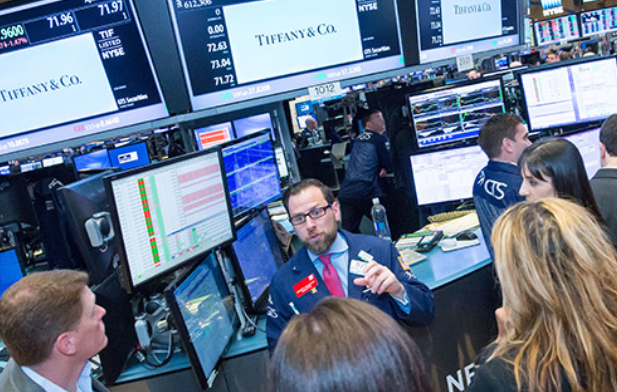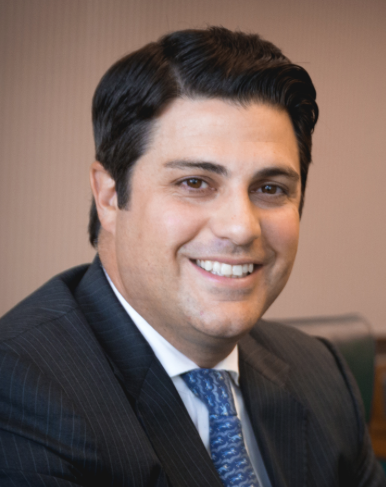Las acciones estadounidenses se recuperaron en julio, con el S&P 500 publicando su mejor retorno mensual desde noviembre de 2020. Las acciones subieron a pesar de que los datos económicos publicados recientemente sugieren que se asoma una recesión. Aunque los economistas consideran una serie de factores a la hora de declarar una recesión formalmente, dos trimestres consecutivos de crecimiento negativo pueden indicar que la recesión ya ha empezado. A diferencia de recesiones anteriores, el mercado laboral sigue estando fuerte, con la tasa de desempleo en el 3,6%.
La guerra Rusia- Ucrania, que ya dura más de cinco meses, se ha convertido en un peligroso callejón sin salida. Desde que Rusia acometiese su invasión a gran escala, el ministro de Defensa ucraniano ha dicho que al menos se han destruido o dañado 140.000 edificios residenciales, dejando a más de 3,5 millones de personas sin hogar. El 22 de julio, las Naciones Unidas y Turquía firmaron acuerdos con Rusia y Ucrania para reabrir los puertos ucranianos del Mar Negro y reanudar las exportaciones de cereal, aceite de cocina y fertilizantes para abordar las crecientes preocupaciones en torno a una escasez mundial de comida.
El 27 de julio la Reserva Federal anunció otra subida de 75 puntos básicos, en un esfuerzo por luchar agresivamente contra la inflación sin crear una recesión. La reciente subida de tipos eleva la tasa de fondos federales a su nivel más alto desde diciembre de 2018. A pesar de la elevada inflación, los desequilibrios entre oferta y demanda y las presiones generalizadas sobre los precios, la creación de trabajo ha sido robusta y la tasa de desempleo se mantiene baja. En algún momento, la Fed empezará a ralentizar las subidas de tipos, ya que mantiene su compromiso de devolver la inflación a su objetivo del 2%.
El optimismo fluyó por el mercado de convertibles, que ha registrado la mejor rentabilidad mensual que hemos visto desde 2020. El mercado de convertibles es menos sensible a la renta variable de lo que ha sido en el pasado, pero el comportamiento de las acciones todavía genera retornos.
La emisión de convertibles ha sido un tema candente en los últimos años, con niveles récord de emisión en 2020 y 2021. El mercado primario se ha ralentizado significativamente en 2022, pero hemos visto cómo un buen número de compañías tanteaba el terreno con operaciones potenciales para después retirarlas, dadas las condiciones del mercado. Estas compañías y muchas más todavía necesitarán capital para operar, y el mercado convertible sigue siendo una de las maneras menos caras para que capten capital. Vimos algunas emisiones nuevas en mayo y junio, y seguimos optimistas con la perspectiva de que las emisiones remontarán en la segunda mitad del año. Vemos una oportunidad para compañías que emitan convertibles nuevos para reemplazar emisiones existentes. Esto podría ser un tipo de transacción que crezca gradualmente para la compañía, al tiempo que extiende o escala los vencimientos para que sean más manejables. Para los inversores, podríamos ver rentabilidades más altas y primas más bajas. En correcciones anteriores, el mercado de convertibles ha sido uno de los primeros mercados en recuperarse tanto desde la perspectiva de emisiones como de performance. Esto es porque los convertibles se pueden emitir rápidamente y con menores costes que los bonos tradicionales o las acciones. La opcionalidad que dan las acciones permite a los inversores en estas emisiones participar de las subidas a medida que se recupera el mercado.
En último lugar, las fusiones y adquisiciones (M&A) se recuperaron gracias al cierre de acuerdos, incluyendo la adquisición de Vonage por parte de Ericsson por 6.000 millones de dólares, y la adquisición de Healthcare Trust of America por parte de Healthcare Realty por 7.000 millones de dólares. Otras transacciones realizaron progresos notables al avanzar en la consecución de aprobaciones por parte del regulador, y los diferenciales de las operaciones pendientes se fortalecieron en consecuencia.
To access our proprietary value investment methodology, and dedicated merger arbitrage portfolio we offer the following UCITS Funds in each discipline:
GAMCO MERGER ARBITRAGE
GAMCO Merger Arbitrage UCITS Fund, launched in October 2011, is an open-end fund incorporated in Luxembourg and compliant with UCITS regulation. The team, dedicated strategy, and record dates back to 1985. The objective of the GAMCO Merger Arbitrage Fund is to achieve long-term capital growth by investing primarily in announced equity merger and acquisition transactions while maintaining a diversified portfolio. The Fund utilizes a highly specialized investment approach designed principally to profit from the successful completion of proposed mergers, takeovers, tender offers, leveraged buyouts and other types of corporate reorganizations. Analyzes and continuously monitors each pending transaction for potential risk, including: regulatory, terms, financing, and shareholder approval.
Merger investments are a highly liquid, non-market correlated, proven and consistent alternative to traditional fixed income and equity securities. Merger returns are dependent on deal spreads. Deal spreads are a function of time, deal risk premium, and interest rates. Returns are thus correlated to interest rate changes over the medium term and not the broader equity market. The prospect of rising rates would imply higher returns on mergers as spreads widen to compensate arbitrageurs. As bond markets decline (interest rates rise), merger returns should improve as capital allocation decisions adjust to the changes in the costs of capital.
Broad Market volatility can lead to widening of spreads in merger positions, coupled with our well-researched merger portfolios, offer the potential for enhanced IRRs through dynamic position sizing. Daily price volatility fluctuations coupled with less proprietary capital (the Volcker rule) in the U.S. have contributed to improving merger spreads and thus, overall returns. Thus our fund is well positioned as a cash substitute or fixed income alternative.
Our objectives are to compound and preserve wealth over time, while remaining non-correlated to the broad global markets. We created our first dedicated merger fund 32 years ago. Since then, our merger performance has grown client assets at an annualized rate of approximately 10.7% gross and 7.6% net since 1985. Today, we manage assets on behalf of institutional and high net worth clients globally in a variety of fund structures and mandates.
Class I USD – LU0687944552
Class I EUR – LU0687944396
Class A USD – LU0687943745
Class A EUR – LU0687943661
Class R USD – LU1453360825
Class R EUR – LU1453361476
GAMCO ALL CAP VALUE
The GAMCO All Cap Value UCITS Fund launched in May, 2015 utilizes Gabelli’s its proprietary PMV with a Catalyst™ investment methodology, which has been in place since 1977. The Fund seeks absolute returns through event driven value investing. Our methodology centers around fundamental, research-driven, value based investing with a focus on asset values, cash flows and identifiable catalysts to maximize returns independent of market direction. The fund draws on the experience of its global portfolio team and 35+ value research analysts.
GAMCO is an active, bottom-up, value investor, and seeks to achieve real capital appreciation (relative to inflation) over the long term regardless of market cycles. Our value-oriented stock selection process is based on the fundamental investment principles first articulated in 1934 by Graham and Dodd, the founders of modern security analysis, and further augmented by Mario Gabelli in 1977 with his introduction of the concepts of Private Market Value (PMV) with a Catalyst™ into equity analysis. PMV with a Catalyst™ is our unique research methodology that focuses on individual stock selection by identifying firms selling below intrinsic value with a reasonable probability of realizing their PMV’s which we define as the price a strategic or financial acquirer would be willing to pay for the entire enterprise. The fundamental valuation factors utilized to evaluate securities prior to inclusion/exclusion into the portfolio, our research driven approach views fundamental analysis as a three pronged approach: free cash flow (earnings before, interest, taxes, depreciation and amortization, or EBITDA, minus the capital expenditures necessary to grow/maintain the business); earnings per share trends; and private market value (PMV), which encompasses on and off balance sheet assets and liabilities. Our team arrives at a PMV valuation by a rigorous assessment of fundamentals from publicly available information and judgement gained from meeting management, covering all size companies globally and our comprehensive, accumulated knowledge of a variety of sectors. We then identify businesses for the portfolio possessing the proper margin of safety and research variables from our deep research universe.
Class I USD – LU1216601648
Class I EUR – LU1216601564
Class A USD – LU1216600913
Class A EUR – LU1216600673
Class R USD – LU1453359900
Class R EUR – LU1453360155
GAMCO CONVERTIBLE SECURITIES
GAMCO Convertible Securities’ objective is to seek to provide current income as well as long term capital appreciation through a total return strategy by investing in a diversified portfolio of global convertible securities.
The Fund leverages the firm’s history of investing in dedicated convertible security portfolios since 1979.
The fund invests in convertible securities, as well as other instruments that have economic characteristics similar to such securities, across global markets (but the fund will not invest in contingent convertible notes). The fund may invest in securities of any market capitalization or credit quality, including up to 100% in below investment grade or unrated securities, and may from time to time invest a significant amount of its assets in securities of smaller companies. Convertible securities may include any suitable convertible instruments such as convertible bonds, convertible notes or convertible preference shares.
By actively managing the fund and investing in convertible securities, the investment manager seeks the opportunity to participate in the capital appreciation of underlying stocks, while at the same time relying on the fixed income aspect of the convertible securities to provide current income and reduced price volatility, which can limit the risk of loss in a down equity market.
Class I USD LU2264533006
Class I EUR LU2264532966
Class A USD LU2264532701
Class A EUR LU2264532610
Class R USD LU2264533345
Class R EUR LU2264533261
Class F USD LU2264533691
Class F EUR LU2264533428
Disclaimer:
The information and any opinions have been obtained from or are based on sources believed to be reliable but accuracy cannot be guaranteed. No responsibility can be accepted for any consequential loss arising from the use of this information. The information is expressed at its date and is issued only to and directed only at those individuals who are permitted to receive such information in accordance with the applicable statutes. In some countries the distribution of this publication may be restricted. It is your responsibility to find out what those restrictions are and observe them.
Some of the statements in this presentation may contain or be based on forward looking statements, forecasts, estimates, projections, targets, or prognosis (“forward looking statements”), which reflect the manager’s current view of future events, economic developments and financial performance. Such forward looking statements are typically indicated by the use of words which express an estimate, expectation, belief, target or forecast. Such forward looking statements are based on an assessment of historical economic data, on the experience and current plans of the investment manager and/or certain advisors of the manager, and on the indicated sources. These forward looking statements contain no representation or warranty of whatever kind that such future events will occur or that they will occur as described herein, or that such results will be achieved by the fund or the investments of the fund, as the occurrence of these events and the results of the fund are subject to various risks and uncertainties. The actual portfolio, and thus results, of the fund may differ substantially from those assumed in the forward looking statements. The manager and its affiliates will not undertake to update or review the forward looking statements contained in this presentation, whether as result of new information or any future event or otherwise.


